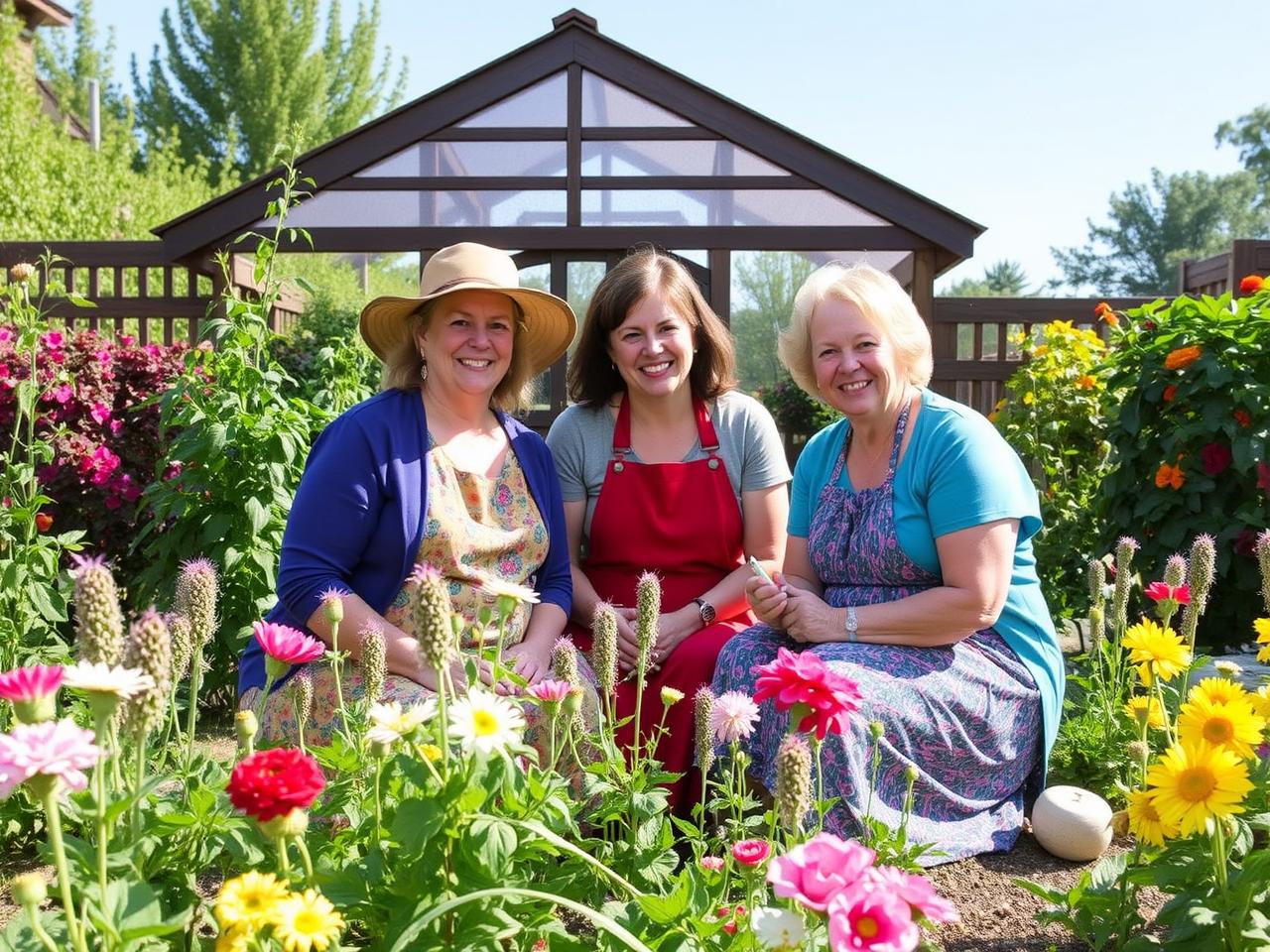Healing Gardens: Designing Outdoor Spaces for Stress Relief and Emotional Well-Being
Healing gardens offer numerous evidence-based benefits for people of all ages and backgrounds. These carefully designed outdoor spaces provide a tranquil environment that can help alleviate stress, anxiety, and depression. Research has demonstrated that exposure to natural elements in healing gardens has a calming effect on both mental and physical states, promoting relaxation and improving overall well-being.
Time spent in these gardens has been associated with enhanced mood, increased feelings of contentment, and a sense of emotional support. In addition to psychological benefits, healing gardens can positively impact physical health. Scientific studies have shown that time spent in natural settings can lead to reduced blood pressure, decreased muscle tension, and enhanced immune function.
The vegetation in healing gardens contributes to air purification, creating a healthier atmosphere for visitors. The multifaceted advantages of healing gardens make them valuable resources for promoting holistic health and wellness among those who utilize these restorative spaces.
Key Takeaways
- Healing gardens provide a range of physical, mental, and emotional benefits for individuals, including stress reduction, improved mood, and enhanced overall well-being.
- When designing a healing garden, it is important to consider elements such as accessibility, sensory stimulation, and the incorporation of natural materials and plants.
- Nature and natural elements play a crucial role in healing gardens, providing a sense of connection to the outdoors and promoting relaxation and restoration.
- The use of color and scent in healing gardens can have a significant impact on mood and emotional well-being, with certain colors and fragrances promoting feelings of calm and comfort.
- Creating a sense of tranquility and calm in healing gardens involves thoughtful design and layout, including the use of water features, seating areas, and natural landscaping to promote relaxation and peacefulness.
Designing a Healing Garden: Elements to Consider

Plant Variety and Natural Beauty
Incorporating a variety of plants and greenery into the garden space is crucial. This can include flowers, shrubs, trees, and other types of vegetation that provide visual interest and a sense of natural beauty.
Layout and Harmony
The layout of the garden should be carefully planned to create a sense of flow and harmony. Pathways and seating areas should be designed to invite individuals to explore and relax within the space.
Water Features and Sensory Experience
The inclusion of water features, such as fountains, ponds, or streams, can have a calming effect on the mind and body, creating a sense of peace and tranquility within the garden space. Additionally, the overall sensory experience within the garden should be considered, including the use of color, scent, and texture to create a space that is both visually appealing and emotionally uplifting.
Incorporating Nature and Natural Elements

One of the key components of healing gardens is the incorporation of nature and natural elements throughout the space. This can include the use of plants, flowers, trees, and other forms of vegetation that can provide a sense of natural beauty and tranquility. The presence of nature within the garden can help individuals feel more connected to the earth and can provide a sense of grounding and stability.
Additionally, natural elements such as rocks, stones, and wood can be used to add texture and visual interest to the garden space, creating a sense of harmony and balance. Incorporating nature into healing gardens can also help individuals feel more relaxed and at ease. The presence of greenery and natural elements has been shown to have a calming effect on the mind and body, helping to reduce stress and anxiety.
Additionally, spending time in nature has been linked to improved mood and overall well-being, making healing gardens an ideal space for individuals to find solace and rejuvenation.
The Role of Color and Scent in Healing Gardens
Color and scent play a crucial role in the design of healing gardens, as they can have a profound impact on the overall sensory experience within the space. When selecting plants and flowers for a healing garden, it is important to consider the use of color to create a visually appealing and emotionally uplifting environment. Bright and vibrant colors such as reds, oranges, and yellows can create a sense of energy and vitality within the garden space, while softer hues such as blues, purples, and greens can evoke feelings of calm and tranquility.
In addition to color, scent also plays a significant role in the design of healing gardens. The presence of fragrant flowers and herbs can help create a sensory experience that is both soothing and invigorating. Certain scents such as lavender, jasmine, and rosemary have been shown to have a calming effect on the mind and body, helping to reduce stress and promote relaxation.
Overall, the use of color and scent in healing gardens can help create a space that is both visually stunning and emotionally uplifting for individuals seeking solace and rejuvenation.
Creating a Sense of Tranquility and Calm
Creating a sense of tranquility and calm is essential when designing a healing garden, as these spaces are intended to provide individuals with a peaceful and rejuvenating environment. One way to achieve this is through the use of natural materials such as wood, stone, and gravel to create pathways, seating areas, and other features within the garden space. These materials can help create a sense of harmony and balance within the garden, while also providing a connection to the earth.
Another important aspect of creating tranquility within healing gardens is through the use of sound. The presence of water features such as fountains or streams can create a soothing ambiance within the garden space, helping individuals feel more relaxed and at ease. Additionally, wind chimes or other forms of gentle sound can add an extra layer of tranquility to the space, creating a peaceful environment for individuals to enjoy.
Healing Gardens for Specific Populations: Children, Elderly, and Those with Disabilities

Designing for Children
Healing gardens for children can incorporate interactive elements that encourage exploration and discovery. These may include sensory plants, playful sculptures, and winding pathways that stimulate their senses and foster a sense of wonder. By incorporating these elements, children can feel more engaged with their surroundings, while also providing opportunities for learning and growth within the garden space.
Designing for Elderly Individuals
For elderly individuals, healing gardens can be designed with accessibility in mind. Features such as smooth pathways, comfortable seating areas, and raised planters for easy gardening activities can help create a comfortable and relaxing environment. These elements can help elderly individuals feel more at ease within the garden space, while also providing opportunities for socialization and relaxation.
Designing for Individuals with Disabilities
Healing gardens can be designed to be fully accessible for individuals with disabilities. Features such as wide pathways, wheelchair-friendly surfaces, and sensory plants that cater to varying needs can help create an inclusive environment. By incorporating these elements, individuals with disabilities can fully enjoy the benefits of spending time in nature, promoting a sense of well-being and relaxation.
Maintenance and Care for Healing Gardens
Maintaining a healing garden is essential in order to ensure that it continues to provide a peaceful and rejuvenating environment for individuals to enjoy. This includes regular upkeep such as watering plants, pruning shrubs, weeding flower beds, and maintaining pathways to ensure that the garden remains safe and accessible for all visitors. Additionally, it is important to consider seasonal maintenance tasks such as planting new flowers in the spring or preparing the garden for winter in order to keep the space looking beautiful year-round.
In addition to regular maintenance tasks, it is also important to consider the overall care of the garden space in order to promote its longevity and sustainability. This can include practices such as composting organic waste from the garden, using sustainable gardening techniques such as mulching or natural pest control methods, and promoting biodiversity within the garden space by incorporating a variety of plants that support local wildlife. Overall, maintaining a healing garden requires dedication and care in order to ensure that it continues to provide a peaceful and rejuvenating environment for individuals seeking solace and tranquility.
By incorporating these maintenance practices into the care of healing gardens, individuals can continue to benefit from these beautiful spaces for years to come.
FAQs
What is a healing garden?
A healing garden is an outdoor space designed to promote stress relief, emotional well-being, and overall healing. These gardens are often found in healthcare facilities, but can also be created in residential or community settings.
What are the benefits of healing gardens?
Healing gardens have been shown to reduce stress, anxiety, and depression, as well as improve mood, concentration, and overall well-being. They can also provide a sense of calm and relaxation, and offer a connection to nature.
What are some common features of healing gardens?
Common features of healing gardens include lush greenery, flowers, water elements such as fountains or ponds, walking paths, seating areas, and sensory elements like fragrant plants or wind chimes. These elements are designed to engage the senses and promote relaxation.
How are healing gardens designed?
Healing gardens are designed with careful consideration of the needs and preferences of the individuals who will use them. Design elements such as accessibility, safety, and privacy are important, as well as the incorporation of natural elements and sensory experiences.
Are healing gardens only for healthcare settings?
While healing gardens are often found in healthcare settings such as hospitals and rehabilitation centers, they can also be created in other environments such as residential communities, schools, and workplaces. The benefits of healing gardens can be enjoyed by people of all ages and backgrounds.







